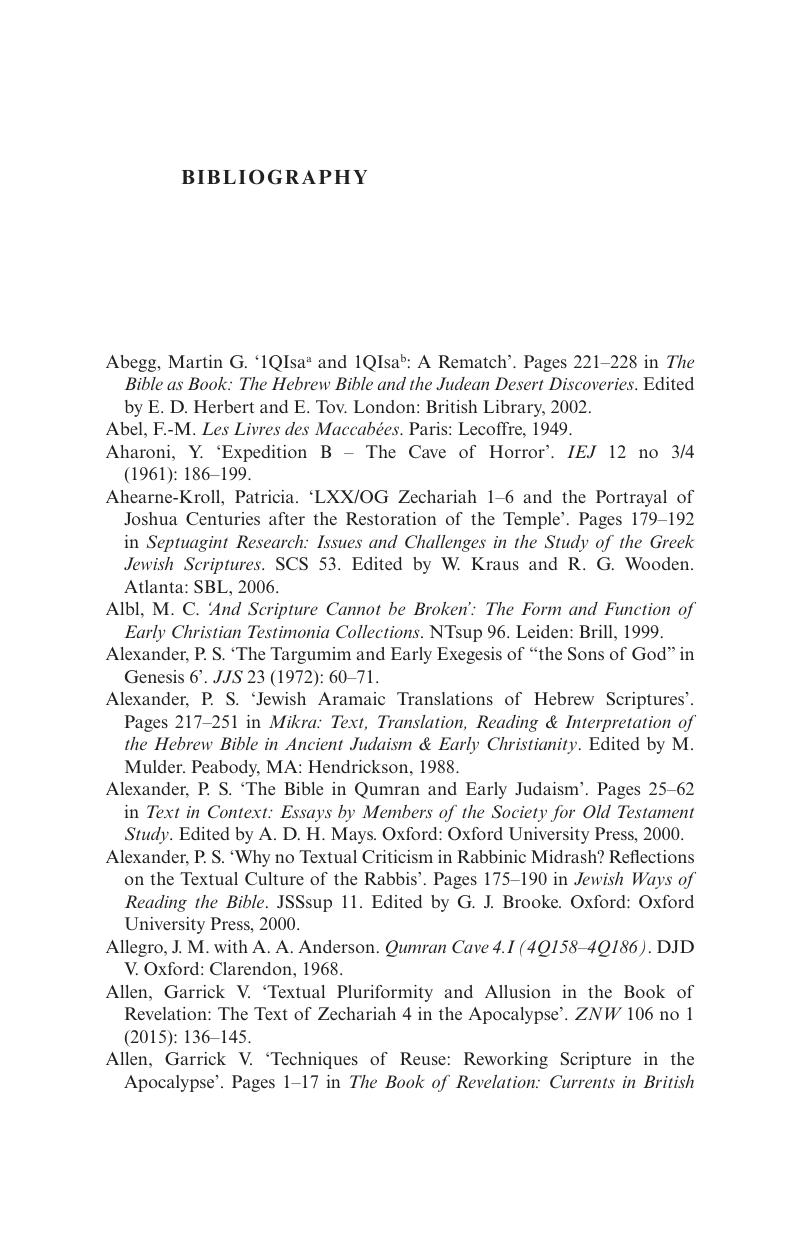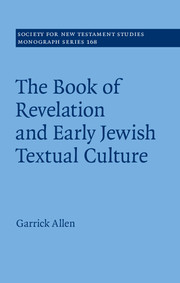Book contents
- The Book of Revelation and Early Jewish Textual CultureVolume 168
- SOCIETY FOR NEW TESTAMENT STUDIES
- The Book of Revelation and Early Jewish Textual Culture
- Copyright page
- Dedication
- Contents
- Tables
- Acknowledgements
- Abbreviations
- 1 The Scribal Apocalypse and Early Jewish Textual Culture
- 2 Textual Pluriformity in Jewish and Christian Antiquity
- 3 Borrowing Prophetic Words: Textual Form and Access to Traditions
- 4 Reading Zechariah with John: Techniques of Reuse, Exegetical Resources, and Textual Hermeneutics
- 5 Reading Zechariah in Early Judaism
- 6 ‘These Words are Faithful and True’ (Rev 22.6)
- Book part
- Bibliography
- Subject Index
- Index of Modern Authors
- Index of Ancient Sources
- References
Bibliography
Published online by Cambridge University Press: 13 July 2017
- The Book of Revelation and Early Jewish Textual CultureVolume 168
- SOCIETY FOR NEW TESTAMENT STUDIES
- The Book of Revelation and Early Jewish Textual Culture
- Copyright page
- Dedication
- Contents
- Tables
- Acknowledgements
- Abbreviations
- 1 The Scribal Apocalypse and Early Jewish Textual Culture
- 2 Textual Pluriformity in Jewish and Christian Antiquity
- 3 Borrowing Prophetic Words: Textual Form and Access to Traditions
- 4 Reading Zechariah with John: Techniques of Reuse, Exegetical Resources, and Textual Hermeneutics
- 5 Reading Zechariah in Early Judaism
- 6 ‘These Words are Faithful and True’ (Rev 22.6)
- Book part
- Bibliography
- Subject Index
- Index of Modern Authors
- Index of Ancient Sources
- References
Summary

- Type
- Chapter
- Information
- The Book of Revelation and Early Jewish Textual Culture , pp. 290 - 326Publisher: Cambridge University PressPrint publication year: 2017



